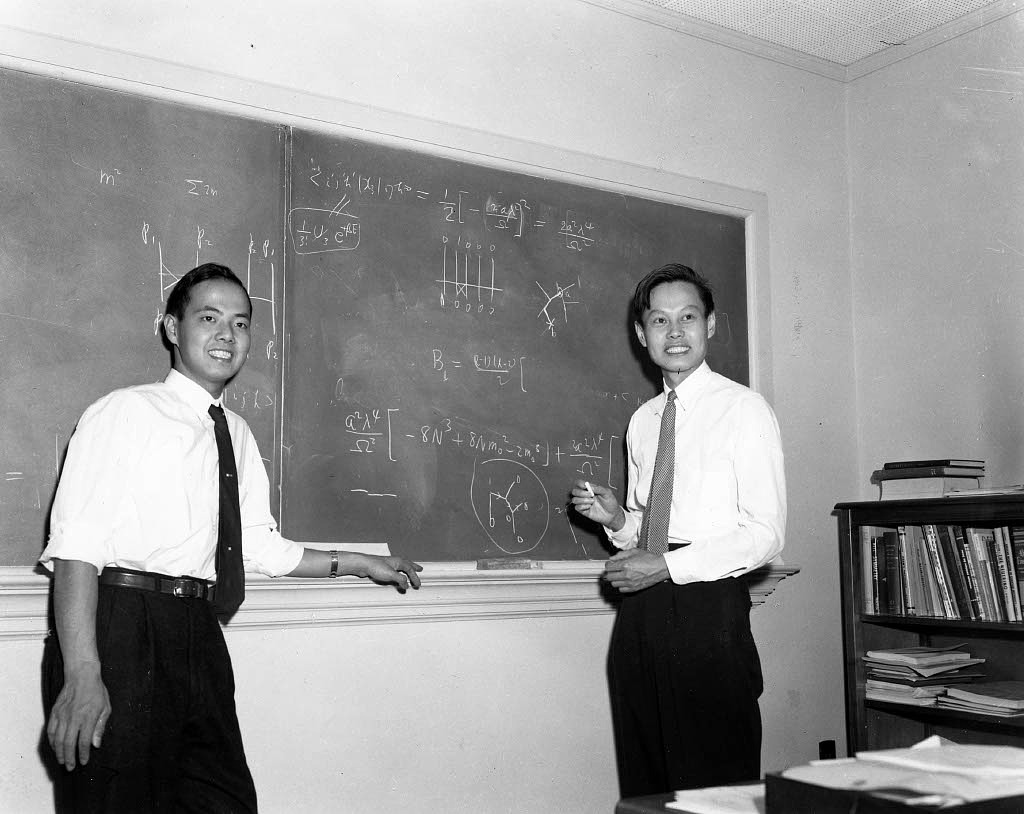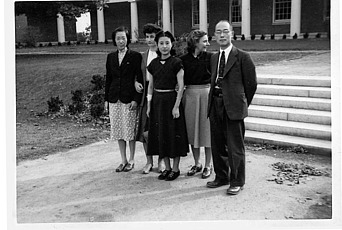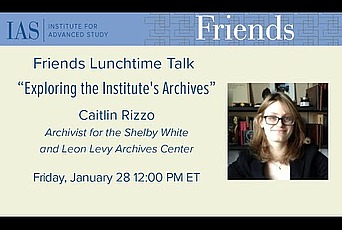Celebrating Chen Ning Yang at 100

The Institute for Advanced Study extends well wishes to former Mathematics/Natural Sciences Faculty member Chen Ning Yang on his 100th birthday.
Yang first arrived at IAS in 1949, when then-Director J. Robert Oppenheimer welcomed a new class of young physicists to the Institute. Yang is listed in the IAS Directory alongside peers Niels Bohr, Raoul Bott, Cecile DeWitt-Morette, Wolfgang Pauli, and George Placzek. He served as a Member in the School of Mathematics until 1954, before joining the permanent Faculty in 1955.
The Institute’s Shelby White and Leon Levy Archives Center holds numerous files relating to Yang’s appointment, including a glowing account of his work from Oppenheimer. He described Yang’s work as demonstrating “great imaginativeness and basic conceptual simplicity, as well as […] considerable analytic power. It is also characterized by a good taste, restraint, and critical judgment, quite remarkable in so young a scientist.” In a letter to Oppenheimer, recommending Yang’s appointment, renowned physicist Enrico Fermi described him as “an exceptionally gifted theoretical physicist.” Eugene P. Wigner likewise lauded the young Yang, writing: “The usefulness of a scientist derives from two functions – from his own research and from his ability to understand and communicate the findings of his colleagues. Yang is outstanding on both counts.”
It was during Yang’s time at IAS that he and his collaborator, fellow Faculty member Tsung Dao Lee, were awarded the 1957 Nobel Prize in Physics "for their penetrating investigation of the so-called parity laws which has led to important discoveries regarding the elementary particles".
Prior to 1957, it was assumed that all elementary particle reactions were symmetric with respect to right and left. But a new type of particle, the K meson, did not behave in this way. This phenomenon puzzled a great many scientists and led Yang and Lee to scrutinize the underlying assumption. They surveyed elementary particle experiments previously conducted by other scholars, and concluded that in the case of K mesons there was no reason to assume that the interactions were left-right symmetric. They also devised a new experiment to verify their hypothesis that the interactions were in fact asymmetric. This experiment was then conducted by a team led by Chien-Shiung Wu. Wu’s contribution helped to secure the Nobel Prize for Yang and Lee, while she received the inaugural Wolf Prize in Physics in 1978.
In his Nobel Prize acceptance speech, Yang recalled that he felt “in more than one sense a product of both the Chinese and Western cultures, in harmony and in conflict.” Nearly 65 years on, we are honored to acknowledge the tremendous legacy left by Yang in our community today.

